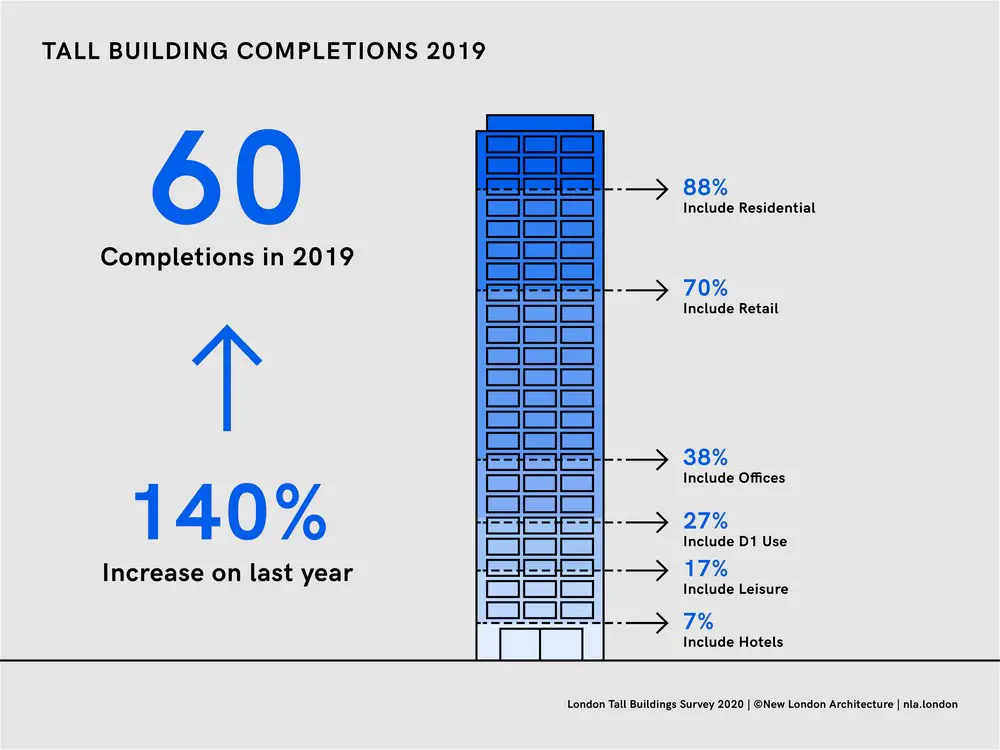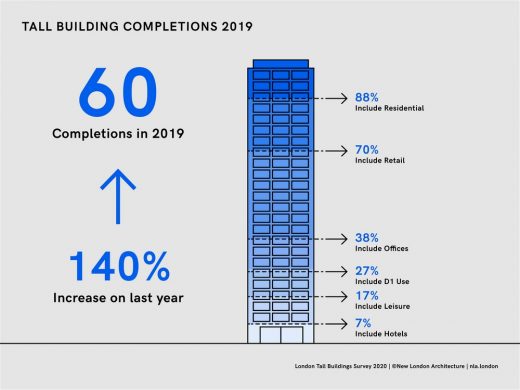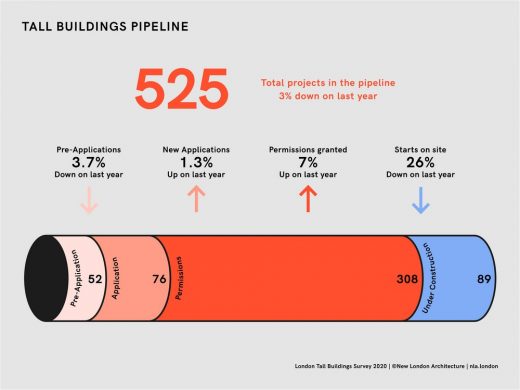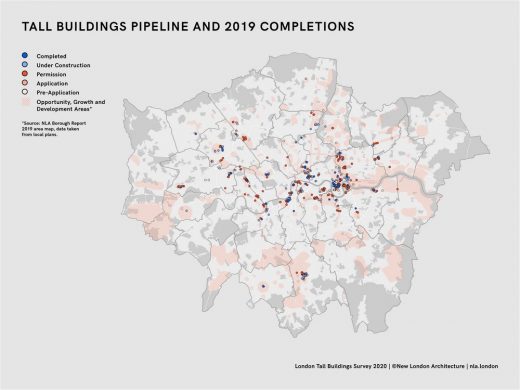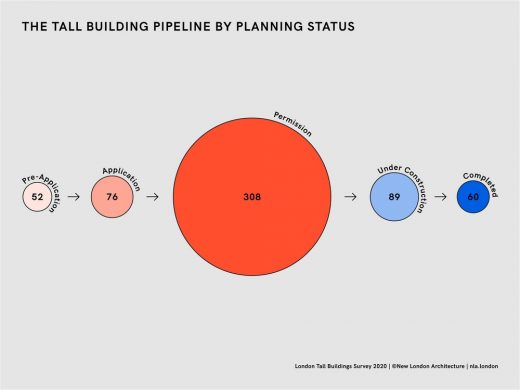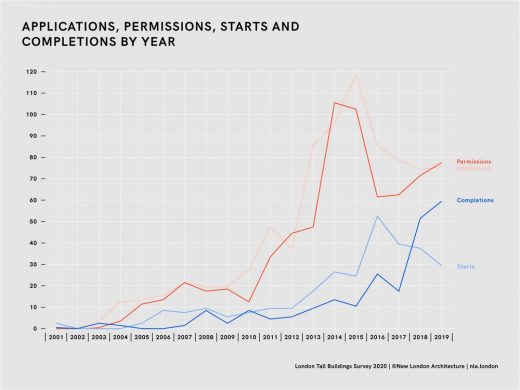NLA London Tall Buildings Survey 2020, Skyscraper Architecture, Architects, Design News, Images
NLA London Tall Buildings Survey 2020 News
NLA London Tall Buildings Survey 2022
21 Apr 2020
NLA London Tall Buildings Survey 2020 Guide
Record Number Of Tall Buildings Added To London’s Skyline In The Last Year Says NLA Survey
· A record 60 tall buildings were completed in 2019, up 140% from 2018, according to New London Architecture’s (NLA) Annual Tall Buildings Survey, published in partnership with Knight Frank
· The total pipeline (buildings in pre-planning, planning and construction) currently stands at 525 tall buildings, a 3% drop from 541 in 2018
· But there was a slowdown in new tall building construction with starts at their lowest since 2015
· Outer London boroughs now account for 35% of the future tall building pipeline, a 6% increase on 2018
· Tall building ‘hotspots’ are Ealing, Greenwich and Haringey
· Tall buildings could provide 110,000 new homes, meeting a significant part of London’s housing requirements
· The NLA London Tall Buildings Survey is now in its seventh year
New London Architecture (NLA) has announced the results of its annual London Tall Buildings Survey, now in its seventh year. Prepared in conjunction with Knight Frank, the report provides the only comprehensive analysis of tall buildings in the capital. The survey includes all buildings of 20 storeys and over, which are proposed, in planning or under construction.
The study published today (21 April 2020) shows that 60 tall buildings were completed in 2019 in London, the highest number on record. This represents a 140% increase from 25 tall building completions in 2018. Planning permissions continued to rise, by 7% in 2019, suggesting an increasing willingness of Planning Committees to approve tall building proposals.
The vast majority of tall building proposals are located within inner London. However, the survey shows that there has been a further shift towards outer zones; 13 of the 20 outer London boroughs now contain tall buildings at various stages of the process. There was a noticeable increase in outer London boroughs, with 6% more tall buildings in the pipeline compared to 2018.
Outer London boroughs now account for 35% of the future tall building pipeline, largely located in Opportunity Areas, as set out in the London Plan, and proposed public transport hubs. Newham continues to be the outer London borough with the largest number (37) though other “hotspots” have emerged, such as Ealing (+8). Overall, the most significant increase in tall buildings, following Ealing, was in Barnet (+5), while the most notable decreases were in Tower Hamlets (-8) and Hackney (-6).
89% of all tall buildings in the pipeline, and 88% of all 2019 completions, are residential. These are estimated to provide over 110,000 new homes for London, just shy of two years’ supply of the housing need for London based on the new London Plan requirements of 65,000 homes per year.
Of the ones completed, 77% were located within a scheme with multiple use classes, with residential and retail, including food and drink, the most prevalent mixed-use combination, accounting for 22%. This more holistic approach can help unlock developments across London by opening the opportunity to forward-fund the commercial aspects of a building and attracting a wider range of buyers amid challenging conditions.
The study does show a decrease in the number of tall buildings that have commenced construction in 2019, the lowest number of new starts for tall buildings across London since 2015. This is consistent with the decline in planning applications submitted over the last couple of years, a result of the combination of the uncertain political backdrop in 2019, rising build costs as well as potential changes in policy.
Peter Murray, Curator-in-chief of New London Architecture said:
“These figures are for a period when the world was very different. COVID-19 means we will have to re-evaluate the direction of development in our cities. It raises questions about population growth in London, about property values and social quality. Will the pressure to build more homes reduce? What will be the long-term reaction to physical distancing and lockdown? Just as the virus itself created uncharted waters for the medical professions, so its effects on cities are unprecedented in terms of planning, design, development and well-being.”
Stuart Baillie, Head of Planning at Knight Frank, the report’s Programme Champion and Research Partner, said:
“London’s tall buildings completion rate, which amounted to 60 in 2019, is quite staggering. Knight Frank’s research found that there is a continued willingness from planning authorities to consider height positively, particularly in outer London boroughs where we have seen significant pipeline growth. Elsewhere we are seeing a fairly consistent number of new schemes coming into the planning system. Clearly Covid-19 will impact the pipeline in 2020, but we’re confident that planning policies, land availability and housing need in London are likely to facilitate a return to a stronger tall building pipeline in the medium term.”
London Tall Building Surveys
- London Tall Buildings Survey 2020
- London Tall Buildings Survey 2019
- London Tall Buildings Survey 2018
- London Tall Buildings Survey 2017
- London Tall Buildings Survey 2016
- London Tall Buildings Survey 2015
- London Tall Buildings Survey 2014
Programme Champion and Research Partner
Knight Frank
Knight Frank LLP is the leading independent global property consultancy. Headquartered in London, Knight Frank has more than 19,000 people operating from 523 offices across 60 territories. The Group advises clients ranging from individual owners and buyers to major developers, investors and corporate tenants. For further information about the Company, please visit www.knightfrank.com.
Programme Supporters
GL Hearn
GL Hearn, part of Capita plc, is one of the UK’s leading property consultancies providing trusted commercial property advice to the public sector, developers, investors and occupiers. Our goal is a simple one – to understand our clients’ business needs, to bring our expertise and enthusiasm and work with them to create, develop, protect and enhance their business interests. Find out more about GL Hearn at www.glhearn.com
New London Architecture (NLA) is an independent forum for discussion, debate and information about architecture, planning, development and construction in the capital. Our core mission is to bring people together to shape a better city. Over the last decade NLA has established itself as a broker between all those involved in planning and designing the future of London and an influential promoter of positive physical change. NLA is based at The Building Centre in central London where our giant interactive model of central London is free to visit six days a week.
www.nla.london
New London Architecture, The Bldg Centre, Store St, Bloomsbury, London, London, WC1E 7BT, United Kingdom
New London Skyscraper Designs
40 Leadenhall Street Skyscraper
Design: Make Architects
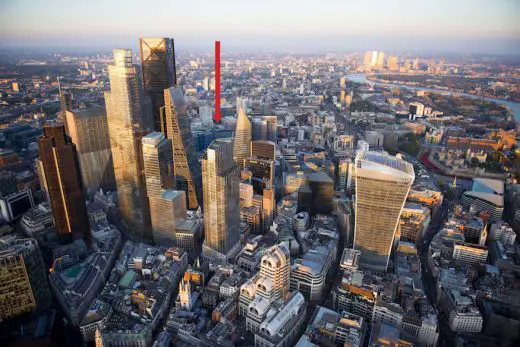
image from architects
1 Leadenhall Tower
Walkie Talkie Building, Fenchurch Street
Design: Rafael Vinoly Architects
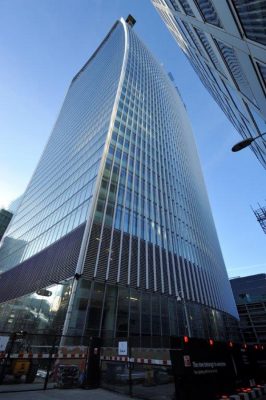
photograph © Nick Weall
Walkie Talkie Building London
Spire London Docklands Tower
Design: HOK, Architects
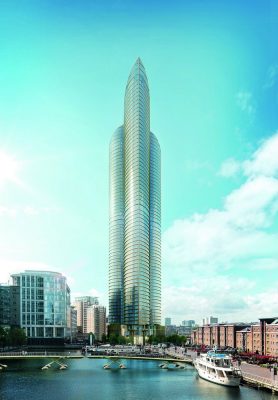
image from architect
Spire London Docklands Tower
60-70 St Mary Axe
Design: Foggo Associates Architects
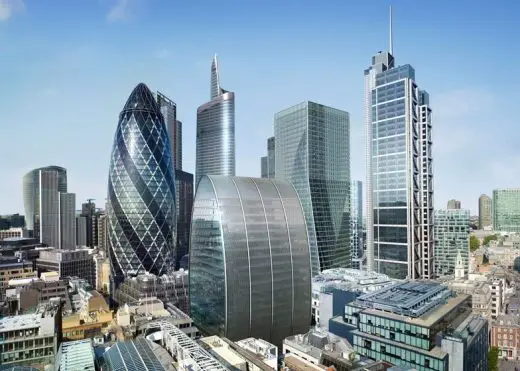
image courtesy of the architects
60-70 St Mary Axe Skyscraper
Design: Eric Parry Architects
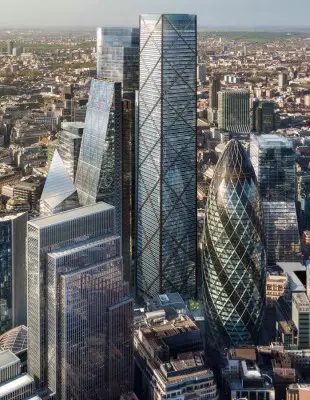
image : DBOX, courtesy Eric Parry Architects
1 Undershaft Tower London
Design: Kohn Pederson Fox – KPF
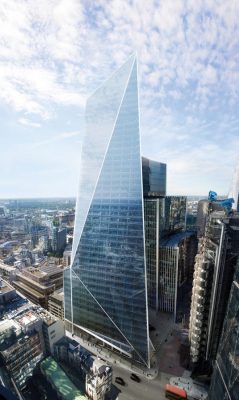
The Scalpel City of London Skyscraper
Ludgate House & Sampson Houses
Architect: PLP Architecture

picture from architects
257 City Road, Islington, north east London
Design: UNStudio
257 City Road Tower
The Shard
Design: Renzo Piano Building Workshop
The Shard London
122 Leadenhall Street
Design: Rogers Stirk Harbour + Partners
The Cheesegrater
Location: London, England, UK
London Architecture
London Architecture Links – chronological list
London Architecture Walking Tours
Tall Buildings
Buildings / photos for the NLA London Tall Buildings Survey 2020 page welcome

